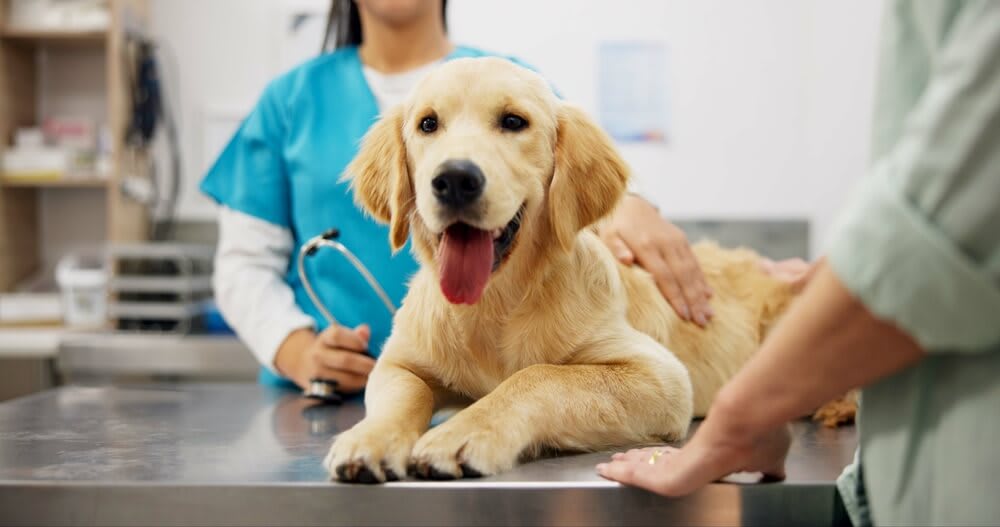
Since waiting periods vary by pet insurer, it’s a good idea to consider them as you compare options from top pet insurance companies and settle on the right coverage for your pet. Here’s what you need to know about pet insurance waiting periods.
Pet Insurance Waiting Periods at a Glance
- Pet insurance waiting periods are the timeframe between when you buy a policy and when coverage actually begins.
- Standard waiting periods for accidents are between one and 14 days, while standard waiting periods for illnesses are between 14 and 30 days.
- Many pet insurers impose special waiting periods for costly conditions like hip dysplasia. These waiting periods are usually between 6 to 12 months.
- Read an insurer’s terms and conditions to determine their waiting period policies before finalizing your choice of provider.
What Is a Pet Insurance Waiting Period?
Put simply, pet insurance waiting periods are the time between your policy’s effective date and when your coverage starts. As soon as a waiting period ends, you can file claims for covered vet bills.
Once you do, your pet insurance company will review your claims and hopefully reimburse you. If your pet requires veterinary services during the waiting period, you’ll have to pay out-of-pocket.
The primary goal of waiting periods is to ensure pet owners buy coverage for their pet’s future accidents and injuries rather than ones that have already happened. That way, pet parents aren’t waiting until their dog or cat are sick to buy coverage.
Waiting periods establish a baseline for pet insurance, ensuring that insurers stay solvent and provide fair and equal coverage for all policyholders.
“Waiting periods can vary for each plan offered by a different pet insurance provider,” says Dr. Liza Cahn, veterinarian for Embrace Pet Insurance. “You can find a plan’s waiting period information on the provider’s website, usually in their FAQs or in their sample policies. Be mindful that waiting periods for some plans are longer for specific conditions, such as hip dysplasia and cruciate ligament injuries.”
How Pet Insurance Waiting Periods Work
Pet insurance waiting periods are fairly straightforward.
Let’s say you finalize pet insurance coverage today. If the pet insurance company has a waiting period of 14 days, for example, you can’t file a claim until that 14-day period is over. If your dog swallows an object and you take them to the vet before the 14-day waiting period ends, you’ll be on the hook for the bill as your policy won’t apply.
However, if your dog’s accident occurs at midnight on the date the 14-day waiting period is over, you’ll likely be eligible for reimbursement from your pet insurance company.
“Ultimately, waiting periods are a time period where policy coverage is restricted,” says Tom Bean, vice president of Insurance Services Operations at Figo Pet Insurance.“ This time period is measured beginning on the original start date of your policy until the designated number of days per your policy.”
Waiting periods vary by company, and multiple ones can exist for different parts of your coverage. For example, it’s not uncommon for pet insurers to have a 14-day waiting period for illnesses and a shorter waiting period for accidents.
How Waiting Periods Are Set
These factors usually impact waiting periods for pet insurance policies:
- Type of condition: Pet insurance companies almost always have set different waiting periods for different conditions. For example, a waiting period for a broken bone is likely different from a waiting period for allergies or an orthopedic or cruciate condition.
- Pet insurance company: Each insurer has its own waiting periods. Even though the average waiting period for accidents and illness is 14 days, some pet insurance companies have longer or shorter waiting periods. Most waiting periods fall in the zero to 30-day range. Exact timeframes are usually influenced by the insurer’s underwriting policies, current client mix, and risk tolerance.
- State requirements: When it comes to pet insurance and other types of insurance plans, location matters as legal requirements usually vary by state. For example, if you live in Virginia, you may have a six-month waiting period for orthopedic conditions. However, if you’re a pet parent in Washington, your waiting period may only be 30 days.
Types of Waiting Periods
Here’s a brief overview of the most common waiting periods on pet insurance policies:
Accident
“An accident waiting period applies to injuries caused by sudden, unexpected events like broken bones or ingestion of foreign objects,” says Dr. Cahn.
Since accidents are unpredictable and often considered emergencies, some pet insurers have shorter waiting periods for them, typically between one to five days.
Illness
“Illness waiting periods apply to claims related to sickness, disease” or other changes to your pet’s healthy state, says Bean.
These are generally longer than the accident waiting periods, oftentimes 14 days. They can apply to various conditions, such as infections, digestive issues, allergies, and cancer.
Pre-existing Conditions
“Pre-existing conditions are illnesses or injuries that occurred before the policy started or during the waiting period,” says Dr. Cahn.
Some pet insurers don’t cover pre-existing conditions at all. However, in recent years, many pet insurers have started to offer coverage for “curable” pre-existing conditions, like urinary tract infections or allergies, if your pet goes symptom-free for a set time.
“Curable” pre-existing condition waiting periods usually run between 180 days to a year.
Special Waiting Periods
“Certain conditions, like orthopedic issues, may have special waiting periods,” says Dr. Cahn.
These waiting periods are typically around six months and issues may include intervertebral disk disease (IVDD), cruciate ligament injury, patellar luxation, and hip dysplasia.
Waiting Periods at Top Pet Insurers
As stated, pet insurance waiting periods are not created equal. You can expect them to vary depending on the insurer and your chosen plan. Your location may also play a role in waiting periods for pet insurance.
Below is a list of standard waiting periods for some top pet insurance companies.
| Insurer | Accident waiting period | Illness waiting period |
|---|---|---|
| ASPCA Pet Health | 14 days | 14 days |
| CarePlus by Chewy | 5 days | 14 days |
| Embrace | 0 days | 14 days |
| Fetch | Up to 15 days | Up to 15 days |
| Figo | 1 day | 14 days |
| Lemonade | 2 days | 14 days |
| MetLife | 0 days | 14 days |
| Pumpkin | 14 days | 14 days |
| Pets Best | 3 days | 14 days |
| Spot | 14 days | 14 days |
Frequently Asked Questions
What Pet Insurance Has the Shortest Wait Time?
Embrace, MetLife, and Companion Protect do not have waiting periods for accident coverage. It’s rare to find policies with no waiting period for illnesses or orthopedic conditions.
How Soon Can You Use Pet Insurance?
You can file a claim and take advantage of your pet insurance policy as soon as the waiting period for your particular situation ends. For example, if your pet insurance company imposes a 14-day waiting period for illnesses and your cat gets sick on day 15, you can use your coverage.
Are There Any Pet Insurance Providers That Cover Pre-existing Conditions?
Some pet insurance companies, such as Embrace, Spot, and ASPCA Pet Health, cover “curable” pre-existing conditions. However, your pet may need to meet specific criteria, such as being symptom-free for 180 days.






